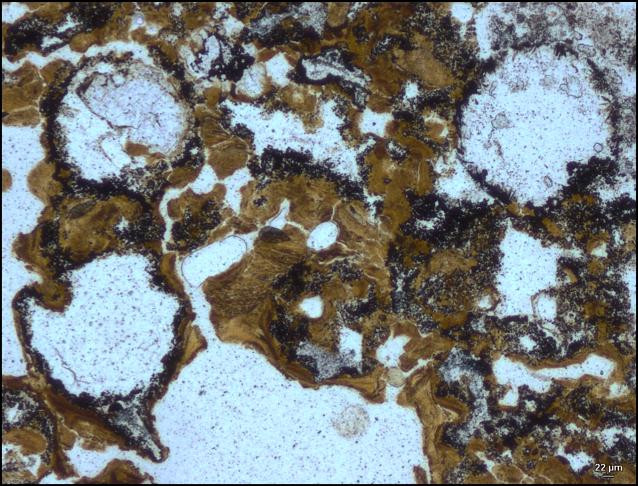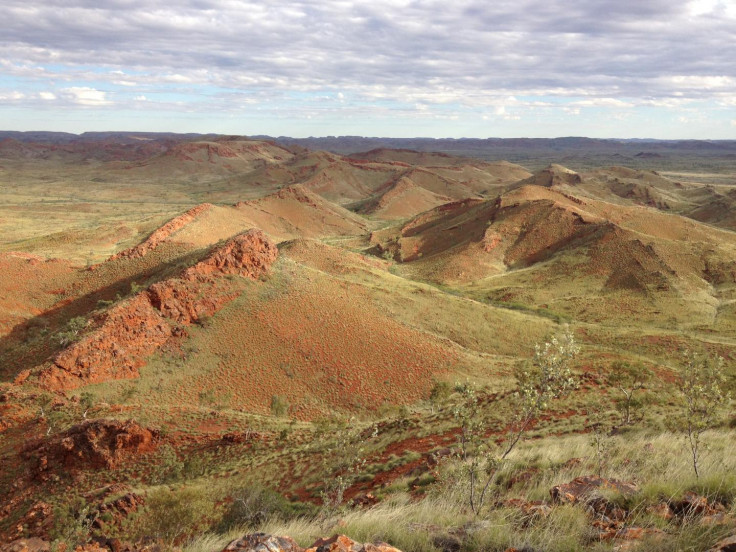Newly discovered fossils in 3.48 billion-year-old rocks are world's oldest evidence of life on land
The new discovery indicates that microbial life existed in hot springs far earlier than previously known.

Scientists have uncovered the earliest evidence of life on Earth in 3.48 billion-year-old rocks in Australia. The fossils were found in ancient hot spring deposits in the Pilbara of Western Australia. The new find may give credence to Charles Darwin's theory that the origin of life occurred in some "warm little pond".
The new discovery not only indicates that microbial life existed in hot springs far earlier than ever known, it also beat the previous record of the world's oldest evidence for microbial life that came from deposits in South Africa, considered to be 2.7 to 2.9 billion years old. The new find also hints that life on Earth may have first originated on land, rather than in oceans.
"Our exciting findings don't just extend back the record of life living in hot springs by 3 billion years, they indicate that life was inhabiting the land much earlier than previously thought, by up to about 580 million years," says the study's lead author, Tara Djokic, who is a PhD candidate at the University of New South Wales (UNSW) in Australia.
"This may have implications for an origin of life in freshwater hot springs on land, rather than the more widely discussed idea that life developed in the ocean and adapted to land later," Djokic added.
Djokic and her colleagues made the discovery when analysing the incredibly well preserved hot spring deposits of the Dresser Formation in Australia's Pilbara Craton. The deposits had been identified as remnants of an ancient marine environment. The study titled "Earliest signs of life on land preserved in ca. 3.5 Ga hot spring deposits", detailing the new findings have been published in Nature Communications.
What is even more notable about the new discovery is that it could also have implications for the search for life on Mars. "Our research also has major implications for the search for life on Mars, because the red planet has ancient hot spring deposits of a similar age to the Dresser Formation in the Pilbara," Djokic said.
"Of the top three potential landing sites for the Mars 2020 rover, Columbia Hills is indicated as a hot spring environment," Djokic added. "If life can be preserved in hot springs so far back in Earth's history, then there is a good chance it could be preserved in Martian hot springs too."
Scientists came to the conclusion that the deposits were formed on land, instead of the ocean after identifying the existence of a mineral called geyserite, which is only found in a terrestrial hot spring environment. Djokic and her team also found numerous new potential "biosignatures", including two different types of stromatolites, which are layered rock structures created by ancient, water-based microbes, which also provided evidence of early life.
The evidence gathered hints at an ancient Earth that housed volcanic craters, which may have provided the perfect breeding ground for primitive forms of life to emerge billions of years ago.
"This shows a diverse variety of life existed in fresh water, on land, very early in Earth's history," said Professor Van Kranendonk, director of the Australian Centre for Astrobiology and head of the UNSW school of Biological, Earth and Environmental Sciences. "The Pilbara deposits are the same age as much of the crust of Mars, which makes hot spring deposits on the red planet an exciting target for our quest to find fossilised life there."

© Copyright IBTimes 2025. All rights reserved.






















